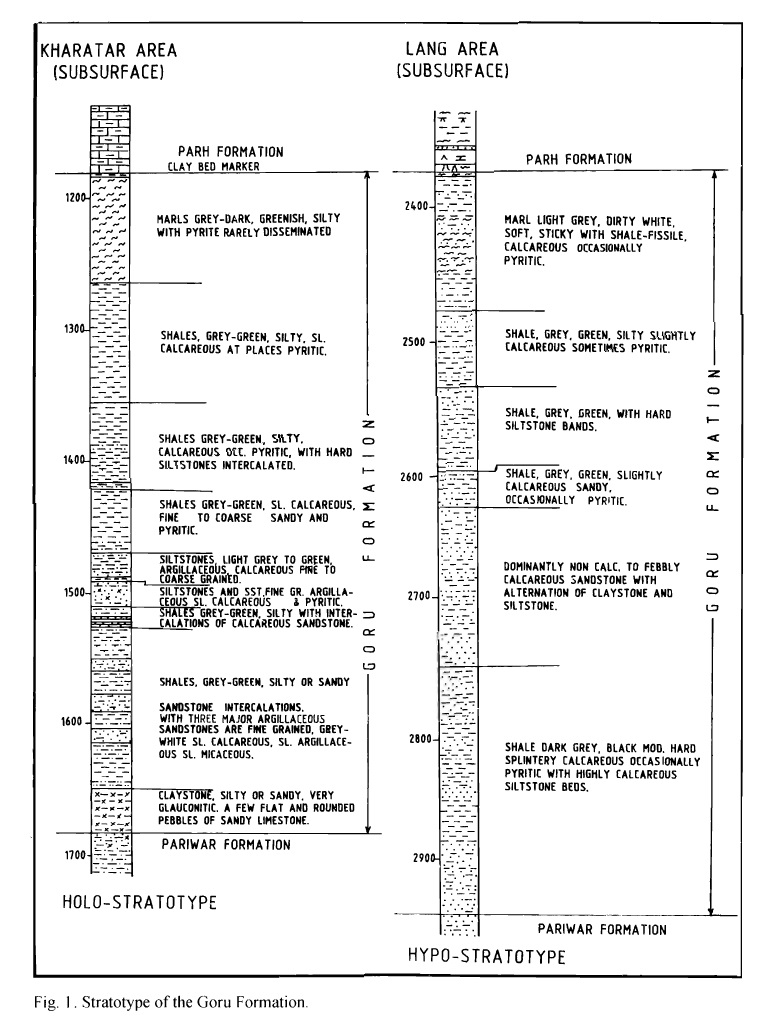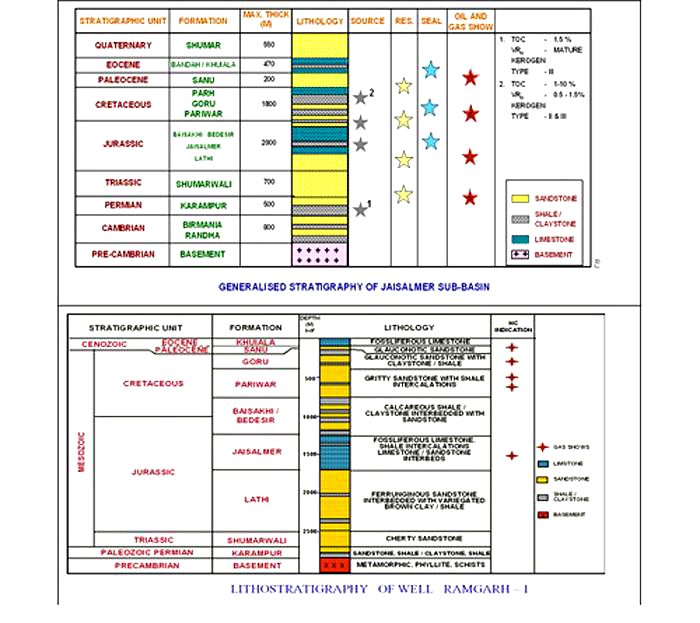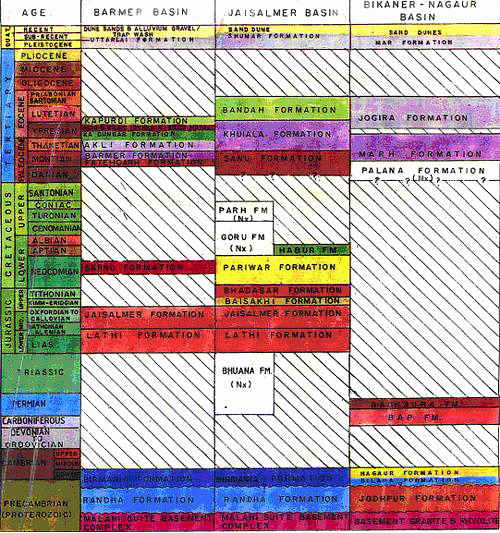Goru Fm
Type Locality and Naming
SUBSURFACE. A Well drilled in Kharatar area. [Original Publication: Verdier, A.C., Willm, C and Brajon, J. 1967. Completion report on Kharatar wells No.1 and 2 (KT-1 and KT-2) Jaisalmer Project, ONGC-IFP report (unpublished)]. Reference well: Well Lang-2, interval 2375-2940 m
Synonyms: The nomenclature of this formation is drawn from Pakistan where the formation with same name and age exists. This was originally designated by Williams (1959).
Lithology and Thickness
Sandy claystone. In a type well section of the Kharatar area, the lithology is grey to greenish grey, moderately hard, feebly calcareous, occasionally pyritic shale along with calcareous siltstone and fine-grained clayey, micaceous sandstone. The formation is capped by a marl bed.
Dasgupta (1975) sub-divided this formation into two members, which are Lower Goru Member, Upper Goru Member.
[Figure 1: Stratotype of Goru Formation, Mesozoic Lithostratigraphy of the Jaisalmer Basin, Rajasthan, Journal of the Paleontological Society of India, Vol. 51(2) (after Singh N.P, 2006)]
[Figure 2: Generalized and Subsurface Stratigraphy of Jaisalmer Basin (from dghindia.gov.in)]
Relationships and Distribution
Lower contact
Lower boundary of the formation is conformable with the underlying Pariwar Formation and is placed between the grey to olive green highly glauconitic claystone and the clayey sandstone of Goru Fm and Pariwar Fm, respectively.
Upper contact
The upper contact is conformable with clayey limestone of overlying Parh Formation which changes to a dominantly marl sequence in Lang area of Shahgarh sub-basin.
GeoJSON
Fossils
Lower Goru Member is poorly fossiliferous particularly in its lower part. General Aptian-Albian age is tentatively suggested for this part (Sigal, 1965 and Narayanan and Krishna, 1983). The upper part of Lower Goru with the identification of planktonic zone - Hedbergella washitensis - Planomalina buxtorfi.
Upper Goru Member is fairly rich in microfauna Sigal (1965) and Mehrotra and Singh (1968) reported a diversified planktonic foraminiferal assemblage including: Rotalipora cushmani, Thalmanninella Gr. brotzeni, Praeglobotruncana stephani, Globotruncana turbinata etc.
Age
Depositional setting
The litho-association and faunal assemblages recorded from the formation suggest an overall transgressive shallow marine environment approaching deeper bathymetry in the upper part.
Additional Information


